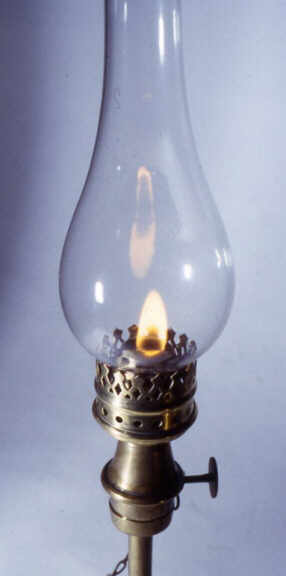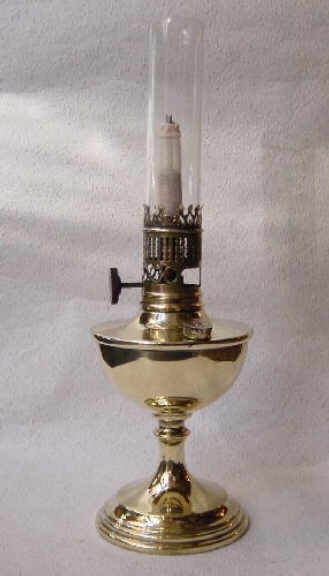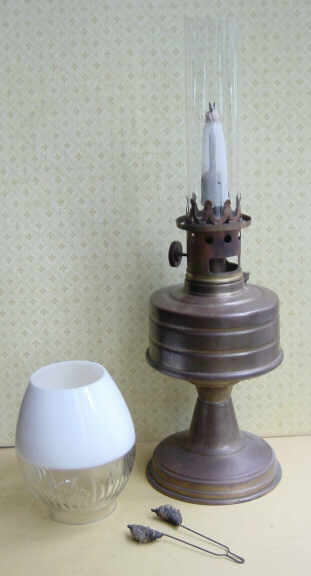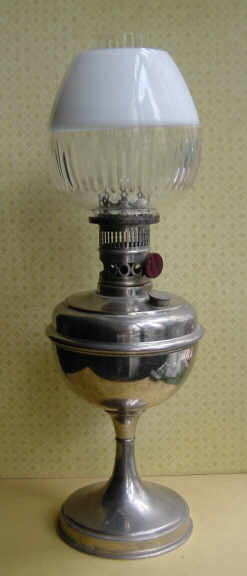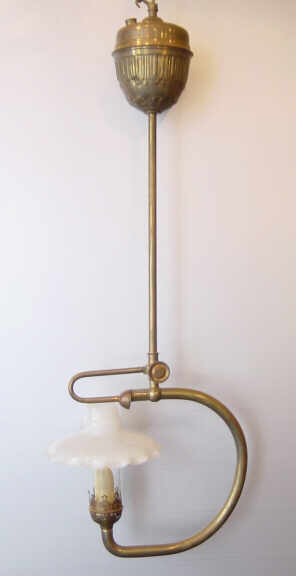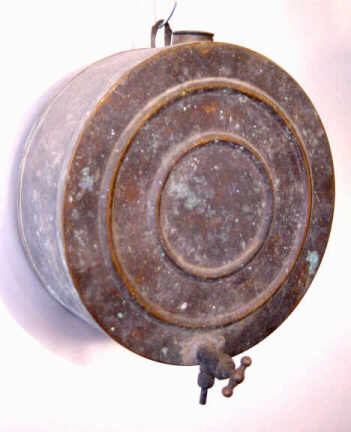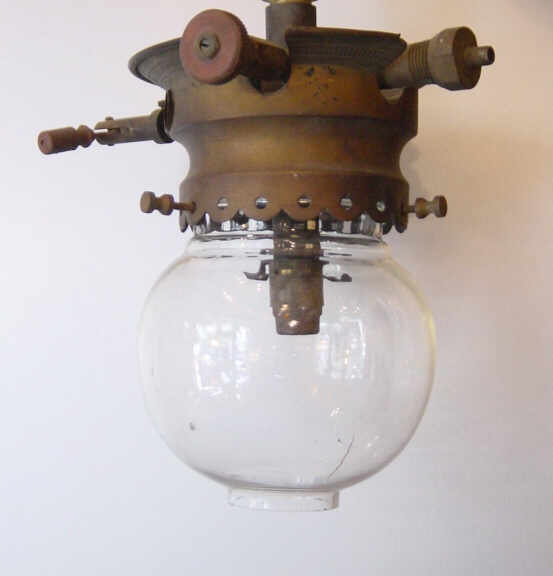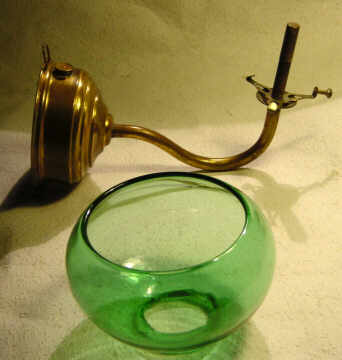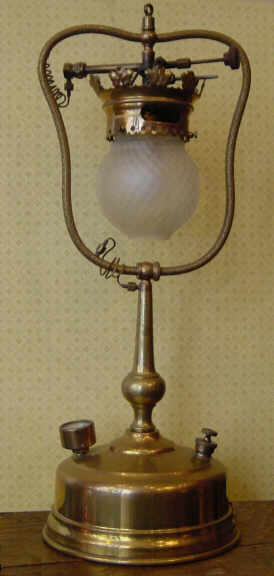|
Robert's "gazogene-lamp", a burning-fluid lamp. |
||||
|
Toward 1840, some lamp makers experienced with new fuels and mixtures of their invention. Robert's "Lampe à gazogène" was among the more successful and announces in some way the later gasoline-lamps. The burning fluid was a mixture of turpentine and spirit The vapors came out of small holes around the head of the burner and the flame-jets maintained the heat necessary to keep the lamp producing more vapor.
Flame-photo courtesy of Heinz Baumann |
|
|
||
| Simple flame gasoline-lamps. | ||||
|
Mille, Gardon, Beaufils and the most successful of all, Pigeon made simple lamps for use with gasoline. The wick is a rope-wick, quite obsolete at the time when those lamps were invented, but as they were very cheap, they had commercial success and are still popular collectors' items. Pigeon created dozens of models based on the same burner principle, and some of his designs were imitated by over a hundred competitors! On the right: two possibilities with the same burner, the regular gallery and a small globe, or the so-called flat-flame gallery and a Vienna-type bulged chimney. |
|
|
||
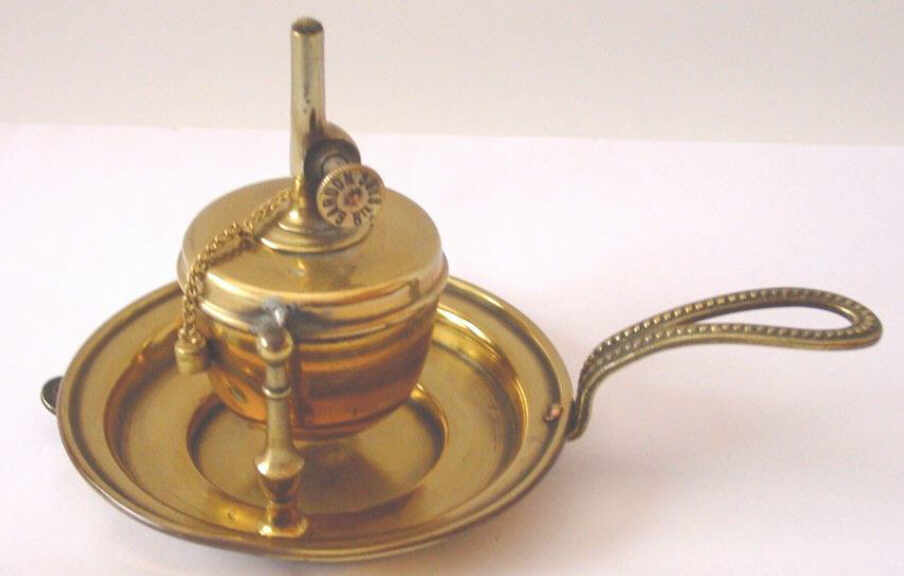 RS |
 RS |
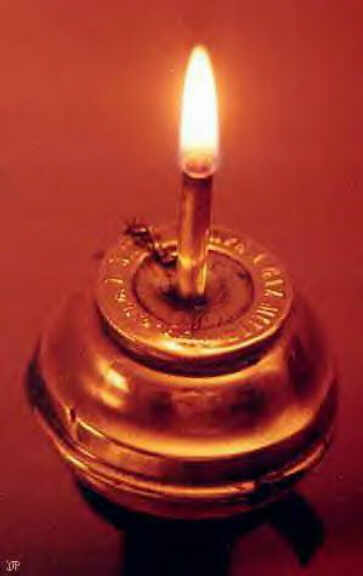 JYP |
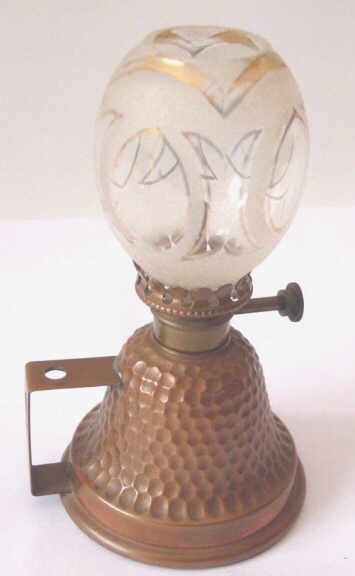
RS |
 |
| Lampe Gardon | Lampe Mille | Lampe Beaufils | Lampe Pigeon | |
| Photos: Dr. Ralph Schoeneborn (RS) and Jean-Yves Perrodin (JYP | ||||
|
Gasoline-lamp with a tubular wick: The "Lampe l'Etoile" by Darté in Paris was developed in the late 1870s. It has a transportation-wick, a tubular burning-wick and a filling spout. The chimney is of the same type as oil-lamps (moderator or Carcel). It can also burn kerosene, and in this case, it will use a Kosmos-chimney. |
|
|||
|
Wick-fed incandescent lamps |
||||
|
Toward the end of 19th century, all liquid fuels were used to produce a blue flame and bring a gas mantle to incandescence. Some years later "Titus" lamps developed by Tito-Landi (Paris) were made in two versions: gasoline or spirit. Many different designs were put on the market until the 1970s. Pre-heating was done with the help of an asbestos-coated fork dipped in spirit. Please visit our special page about the Titus-lamps |
|
|
|
|
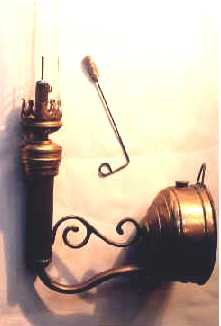 |
The French Anox-burner was designed to be used in gasoline-lamps with the basic burner design and convert unefficient lamps to modern incandescent ones. A round plate of porous stone converts gasoline to vapor and feeds the Bunsen above. |
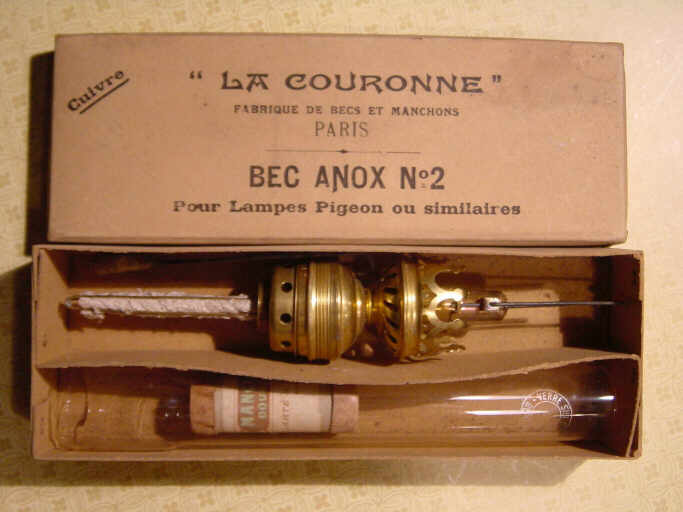 |
||
|
Vapor-lamps for gasoline. |
||||
|
Besides the classical wick, fuel could be brought to the burner (or carburetor) by gravity or through a hollow-wire system from a remote container. The latter could be pressurized. |
||||
|
|
|
|
|
|
|
German open-flame vapor-lamp by Louis Runge (Berlin). |
Gravity-fed "Marvel"-lamp |
Gravity-fed "Lilor" by Liotard, Paris |
Lampe "Succès" and its fuel-container. | |
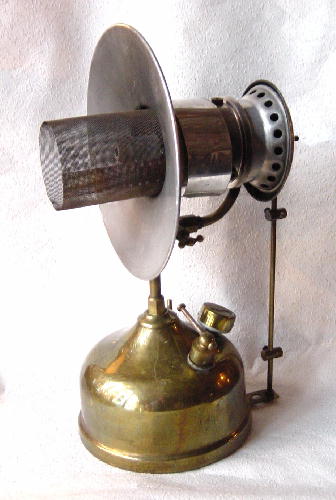 |
|
|
|
|
|
Lampe "UNIC" by G. Haupois in Paris |
Vapor-lamp by Pigeon. |
A table-top Lilor that can be converted to a wall-lamp. |
"P.M.", a pressure-lamp. | |
|
Spirit-lamps. |
||||
|
The most famous French spirit-lamps were the Titus lamps we mentioned already, as they were also offered in a gasoline-version. Many German manufacturers also made spirit-lamps. An example: the "Rustikus" of Ehrich & Graetz,
Berlin. |
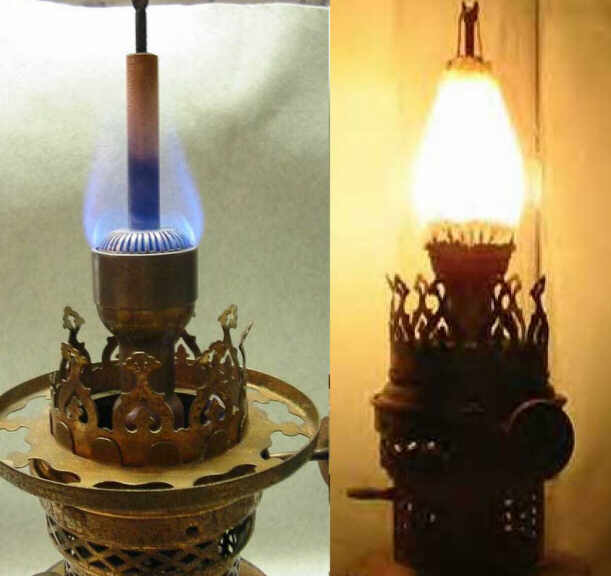 |
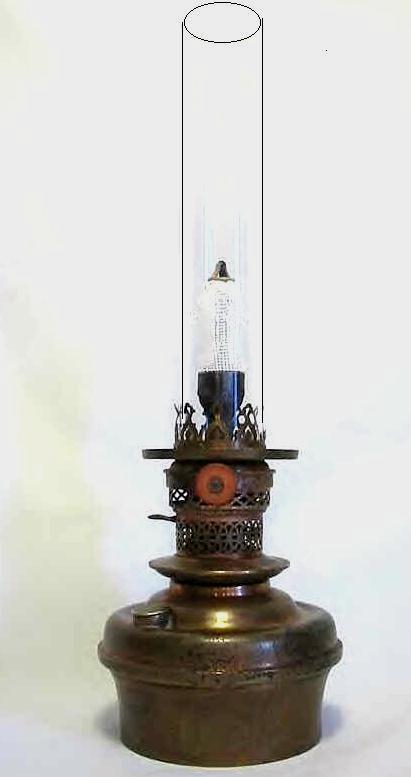 |
||
|
Many inventors included a small permanent flame below the main burner to maintain the heat necessary to the carburetor. |
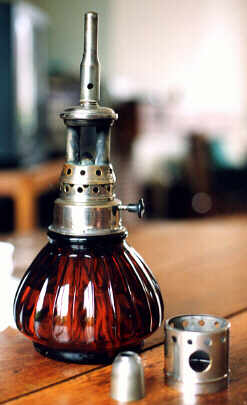 |
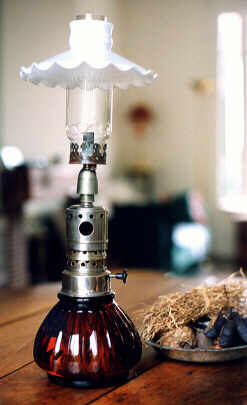 |
||



